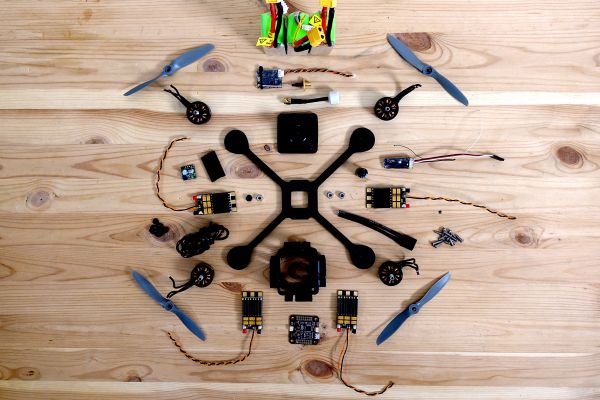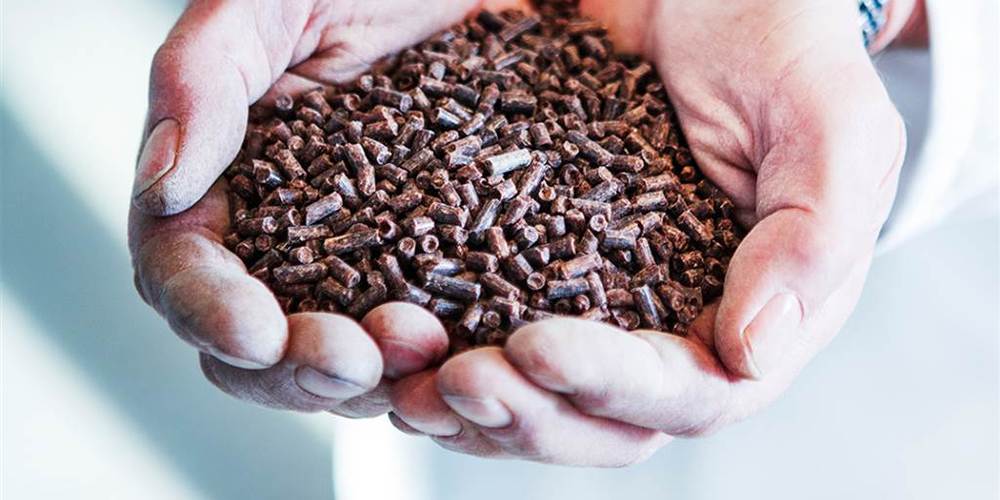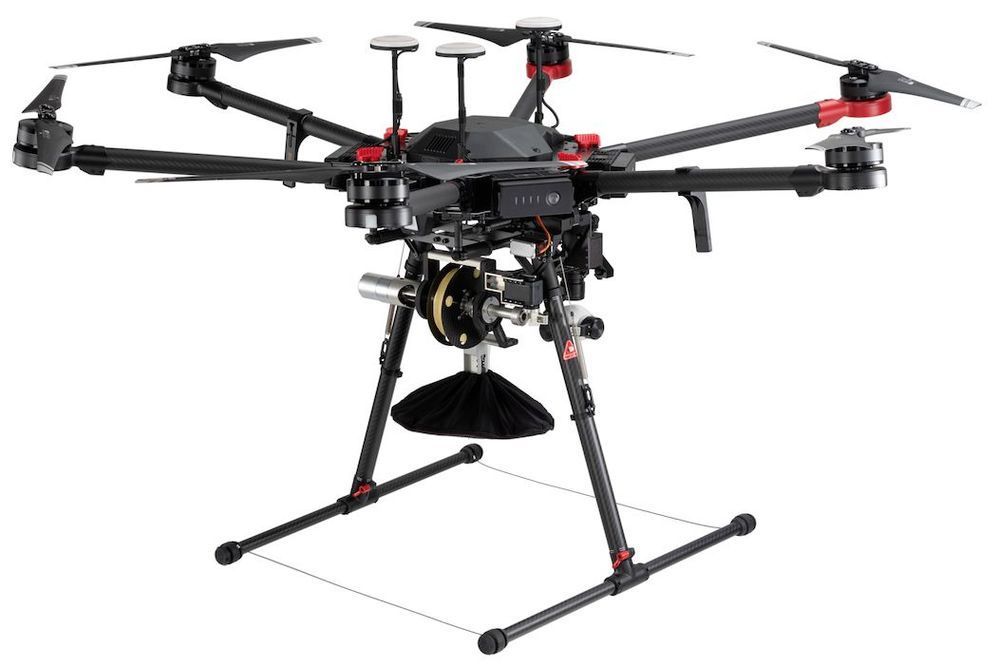As drones become better and better at everything they do, it’s only natural photographers and videographers alike start pushing the boundaries of what’s possible. This particular boundary push is not for the faint of heart, however. I’m reasonably new to the drone world. While I’d been keen to dip a toe for a long time, I had been waiting for commercial applications to justify the acquisition. Thankfully, I found a window and jumped right through it.
A 1.76 pound drone can now move faster than a Tesla at top speed in Ludicrous Mode.
Yesterday, the Drone Racing League set the Guinness World Record for fastest drone, or the category of “fastest ground speed by a battery-powered remote-controlled quadcopter.”
Called the DRL Racer X, the drone can fly at a top speed of 179.6 MPH.
O,.o.
The drone swarm used the affordable off-the-shelf decoy to wreak havoc on enemy integrated air defense systems.
Eli Lilly said Wednesday a monoclonal antibody treatment is effective in reducing levels of the virus that causes Covid-19 in patients, and also appears to prevent patients from visiting the emergency room or hospital.
Lilly had previously released results for a similar treatment using one antibody, which experts viewed as promising. But the new results, of a combination of two antibodies, appear, based on limited data provided in a press release, to be more robust. The results also appear roughly similar to those Regeneron presented last week of its own cocktail of two monoclonal antibodies. Last Friday, President Trump was treated with the Regeneron monoclonal antibodies.
Monoclonal antibodies are synthetic versions of the antibodies that are one of the main weapons of the immune system. Researchers believed that injecting them into patients could help treat them.
Circa 2018
In the 2015 movie “The Martian,” astronaut Mark Watney survives on Mars by growing potato plants in his own waste. The scenario is fictional, of course, but it underscores a real-world challenge for NASA: How can the space agency ensure an uninterrupted supply of safe, nutritious food for astronauts who are tens of millions of miles from the nearest supermarket?
The successful launch of SpaceX’s Falcon Heavy rocket marked a big step toward developing the technology needed to transport colonists to Mars, though the strategy for keeping them and deep-space astronauts fed remains a work in progress.
At Pennsylvania State University, researchers think they’ve hit upon a solution. They’ve devised a compact recycling system that uses astronaut poop and pee to fuel the growth of edible bacteria. As described in a paper published in November 2017 in Life Sciences in Space Research, the bioreactor breaks down human waste into salts and methane gas; the latter is used to fuel the growth of a protein-rich “microbial goo” that’s similar in consistency to Vegemite.
Many people don’t like the thought of delivery drones buzzing up to their doorstep, with their propellers whirling dangerously close. The RDS1 setup was designed with that in mind, as it drops packages – in free-fall – but doesn’t let them hit the ground.
Created by Los Angeles-based company A2Z Drone Delivery, the RDS1 (Rapid Delivery System 1) incorporates a remotely piloted DJI Matrice 600 Pro hexacopter drone that’s equipped with a motorized reel of Kevlar cord. At the end of that tether is an elastic fabric pouch that can hold a payload weighing up to 2 kg (4.4 lb).
When the drone reaches its destination, it remains hovering at an altitude of 150 ft (46 m). It then releases the brake on its tether reel, allowing the payload pouch to freely fall through the air. Shortly before that pouch reaches the ground, however, the reel brake is gently reapplied, slowing the payload’s descent to a stop.
Organic photovoltaics are a third-generation solar cell technology made of electron donor and electron acceptor materials instead of conventional semiconductor p-n junctions. The performance of this alternative solar cell technology has improved significantly over the past few years and it is now comparable to that of classical inorganic solar cells, both in terms of charge carrier yields (i.e., electrical current generation) and solar spectrum matching.
The only feature of organic photovoltaics that still lags behind traditional solar cells is its achievable voltage (VOC, which stands for open circuit voltage). As electrical power is the product of voltage and current, however, the poor VOC of organic solar cells currently prevents their successful commercialization.
Researchers at the Institute of Materials for Electronics and Energy Technology (i-MEET) in Germany and the National Hellenic Research Foundation (NHRF) in Greece have been investigating specific features of materials used to build organic photovoltaics that could enable greater efficiencies and achievable voltages. Their paper, published in Nature Energy, shows that materials with long exciton lifetimes could be particularly promising for the creation of efficient organic solar cells.
There’s no need to fear arsenic poisoning if you grew up in the Argentinian Andes — hundreds of years of drinking arsenic-laced groundwater will have left you with a genetic tolerance for it.
Geneticists from Lund and Uppsala universities had noticed that certain plants and bacteria could live in environments with lots of arsenic, with natural selection favouring a gene known to improve their ability to metabolise the poison. Curious to see if humans could also gain some kind of arsenic immunity, they looked at a group of people who they knew would have been exposed to the poison over many generations — the indigenous peoples of the Argentinian part of the Andes. Sure enough, a higher-than average proportion of people they studied possessed the AS3MT gene, which lets them flush out toxins faster than “normal” people.
The genetic samples tested for the AS3MT gene came from 346 residents of the small, isolated town of San Antonio de los Cobres, located more than 3,700m above sea level in the Andes. Not only does the bedrock in the surrounding area contain a lot of arsenic which gets into the groundwater, but mining operations from the era of Spanish colonisation onwards have released even more arsenic — so both modern people and mummies dating back 7,000 years have had high levels of arsenic found in their hair and internal organs.
Physicists have created a broadband detector of terahertz radiation based on graphene. The device has potential for applications in communication and next-generation information transmission systems, security, and medical equipment. The study came out in ACS Nano Letters.
The new detector relies on the interference of plasma waves. Interference as such underlies many technological applications and everyday phenomena. It determines the sound of musical instruments and causes the rainbow colors in soap bubbles, along with many other effects. The interference of electromagnetic waves is harnessed by various spectral devices used to determine the chemical composition, physical and other properties of objects — including very remote ones, such as stars and galaxies.
Plasma waves in metals and semiconductors have recently attracted much attention from researchers and engineers. Like the more familiar acoustic waves, the ones that occur in plasmas are essentially density waves, too, but they involve charge carriers: electrons and holes. Their local density variation gives rise to an electric field, which nudges other charge carriers as it propagates through the material. This is similar to how the pressure gradient of a sound wave impels the gas or liquid particles in an ever expanding region. However, plasma waves die down rapidly in conventional conductors.









